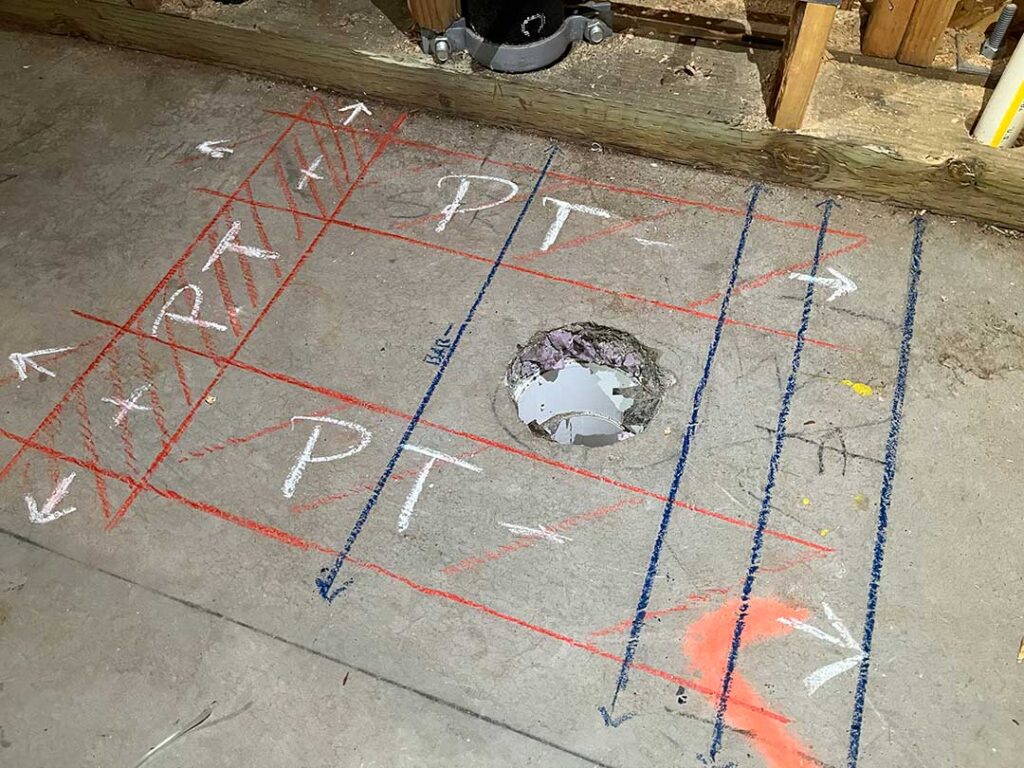RainierGPR Concrete Scanning: Expert Insights and Best Practices
RainierGPR Concrete Scanning: Expert Insights and Best Practices
Blog Article
Checking Out the Depths: A Comprehensive Guide to Concrete Scanning and Its Diverse Applications
In the realm of building and construction and infrastructure advancement, the thorough process of concrete scanning holds a critical function in making sure the structural integrity and security of jobs. As innovation remains to develop, the applications of concrete scanning have expanded much beyond simple surface-level evaluations. From detecting rebar and post-tension cords to mapping out channels and voids concealed within concrete structures, the capabilities of modern scanning methods are both crucial and outstanding. Nevertheless, the real depth of concrete scanning's potential reaches even better, branching right into unexpected markets and triggering ingenious options. The interconnected web of possibilities that concrete scanning presents is not only remarkable yet additionally essential for the innovation of different industries.
Importance of Concrete Scanning
Understanding the importance of concrete scanning is critical in ensuring the security and integrity of structures during building and remodelling jobs. Concrete scanning uses innovative modern technologies such as ground-penetrating radar (GPR) and electromagnetic induction to detect embedded items, spaces, or various other anomalies within concrete frameworks - RainierGPR Concrete Scanning. By performing complete scans prior to drilling, cutting, or coring into concrete, building and construction groups can stay clear of unexpected damage to crucial architectural components like rebar, conduits, or post-tension cords. This positive approach not just avoids costly repairs and task hold-ups but likewise boosts general building and construction security by reducing the danger of structural failings or collapses as a result of compromised stability.
Furthermore, concrete scanning plays a crucial role in making sure compliance with building regulations and guidelines that mandate the protection of existing architectural elements throughout building and construction tasks. By properly mapping out the inner make-up of concrete, scanning technologies enable building experts to make informed choices that maintain the structural stability and durability of structures and framework jobs. In essence, the value of concrete scanning depends on its ability to safeguard both the structural stability and the personnel associated with building ventures.
Technologies Made Use Of in Concrete Scanning
Concrete scanning relies upon innovative modern technologies such as ground-penetrating radar (GPR) and electromagnetic induction to precisely find embedded items and abnormalities within concrete structures. Ground-penetrating radar runs by releasing high-frequency electromagnetic waves right into the concrete. When these waves run into different materials or spaces within the concrete, they get better to the surface, enabling the GPR system to produce a comprehensive subsurface photo. This innovation is particularly effective in locating rebar, post-tension cords, conduits, and various other objects installed in concrete.
Electro-magnetic induction, on the other hand, functions by producing magnetic fields around a concrete structure via a transmitter coil. When metal objects are existing within the concrete, they interrupt these electromagnetic fields, triggering eddy currents to flow via the steel. By measuring the modifications in the magnetic fields with a receiver coil, the system can identify the area of metallic objects in the concrete.
These advanced innovations play a critical role in non-destructive testing, making sure the safety and honesty of concrete structures in various markets.
Applications in Building And Construction Industry
Within the building and construction sector, concrete scanning technology finds varied applications that boost project effectiveness and security. Additionally, concrete scanning is used for locating voids, such as air pockets or areas of damage within concrete, which can compromise the general toughness of a structure. Concrete scanning plays an important role in high quality control by confirming the density of concrete covers over reinforcement, making certain conformity with design specifications and criteria.

Security Benefits of Concrete Scanning
In the realm of building security, the implementation of concrete scanning technology presents an extremely important benefit in preemptively identifying prospective dangers and fortifying architectural integrity. By utilizing advanced scanning methods such as ground-penetrating radar (GPR) and electromagnetic induction, building and construction groups can precisely locate rebar, post-tension cables, channels, and various other surprise objects within concrete structures. This positive technique significantly minimizes the threat of accidental strikes throughout exploration, reducing, or coring activities, thus protecting against costly damages, injuries, and job hold-ups.
Furthermore, click here for info concrete scanning improves employee security by offering real-time information about the structural problem of concrete aspects. By dealing with possible safety issues promptly, concrete scanning adds to producing a safe and secure working environment and alleviating the possibility of structural failures or Resources mishaps on building websites.
Future Trends in Concrete Scanning
Arising innovations in scanning innovation are positioned to transform the area of concrete assessment and analysis. One major fad that is getting traction is the assimilation of expert system (AI) and machine understanding algorithms into concrete scanning tools. By taking advantage of the power of AI, these systems can examine vast quantities of data collected throughout scanning processes to provide more thorough and exact understandings into the problem of concrete frameworks. This can assist in finding concealed problems, predicting potential architectural failures, and also suggesting upkeep methods.
Another significant fad is the growth of even more easy to use and mobile scanning devices. Miniaturization of scanning tools permits easier accessibility to constrained spaces and remote locations, making assessments much more extensive and effective. In addition, developments in cordless communication modern technologies make it possible for real-time information transfer and analysis, assisting in quicker decision-making processes.
Additionally, there is an expanding concentrate on sustainability in concrete scanning technologies - RainierGPR Concrete Scanning. Manufacturers are increasingly incorporating eco-friendly products and energy-efficient attributes right into their tools to lower ecological influence. These future patterns are established to improve the efficiency, accuracy, and sustainability of concrete scanning methods, shaping the industry's future landscape
Conclusion
In verdict, concrete scanning plays a vital duty in the construction market by making certain the safety and performance of various projects. As modern technology advancements, the future of concrete scanning holds encouraging advancements for boosting building and construction processes.

Report this page